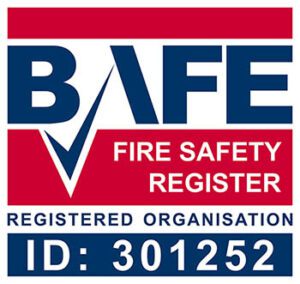When fire isn’t carefully managed it is extremely hazardous. In the right conditions, flames and smoke can spread rapidly, causing considerable damage to people, property and the environment.
Fires can be started accidentally or intentionally, but once alight the heat and poor visibility can make it difficult for people to escape or fight the flames.
The Answer is Fire Prevention
The best way to minimise the risk of fire is to take the threat seriously and put in place fire prevention measures.
Understanding potential triggers, installing fire alarms, smoke alarms and other devices along with making and sharing fire safety plans are all ways to reduce the risk.
Despite a growing population and increasing number of buildings in London, the number of fires in the Capital is at its lowest levels since records began.
There has been a 64% decrease in fires over the last decade.
During this time the London Fire Brigade has focused more resources on fire prevention including advice, education and fitting devices such as smoke and fire alarms.
London Fire Brigade saw ten of its fire stations close at the start of 2014, so in order to keep the number of fires low, we all need to take greater responsibility for fire safety.
Potential Triggers
Fires can start in a wide variety of ways, but there are a number of issues that commonly result in unmanaged fires.
These issues include discarded lit cigarettes, faulty electrics, chip pans, overloaded plug sockets and incorrect storage of combustible materials.
The first step for any fire safety work is to identify the risks within your domestic or commercial environment and putting in place measures to lower the risk.
This could include placing fire blankets in kitchens or annual PAT testing of all electrical items.
Installing Devices
Even in a low risk environment, there is still a chance that a fire may start.
The second concern is therefore to install early warning systems that will improve the chances of escape. Fire alarms, including wireless fire alarm systems, and smoke alarms are examples of such devices.
They will make a loud noise to warn people that fire or smoke has been detected.
Once alerted, people can take action to get out of the building as safely as possible.
Fire alarms can also be connected to local fire stations, so they are also alerted to the incident and can be on the scene more quickly.
Fire Safety Plans
Being alerted to a fire is one thing, but then everyone in the building needs to be clear on how to respond to that alarm.
In commercial buildings, illuminated fire exit signs help to guide people to safety, but they need to practice fire safety procedure regularly, to ensure it is automatic, if and when an incident should arise.
Whether you are at home or in the workplace, it is important that you understand the fire safety plan and you share this information with others.
Making people aware of the potential triggers, how to activate fire alarms and the routes out of a building are all critical to minimising the risks.
As are details such as the importance of not returning into the building until you have been informed it is safe to do so.
If you would like support with fire prevention in London, Surrey Fire and Safety can assist.
From helping you to prepare a Safety Plan and Fire Risk Assessment, to installing Fire Alarms, Surrey Fire and Safety has a wealth of experience in keeping people and property safe.



